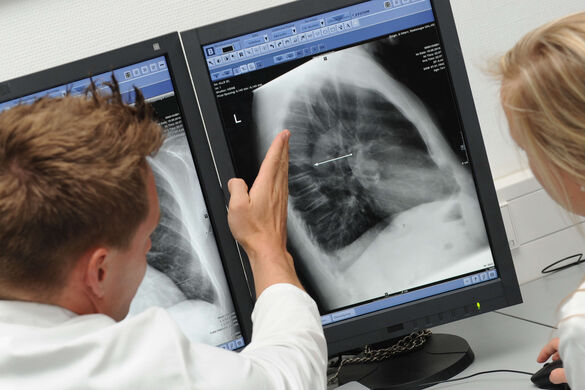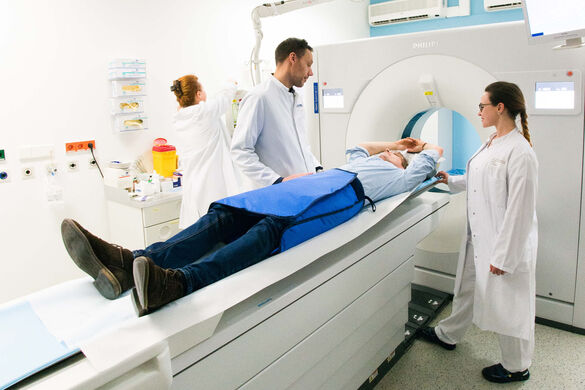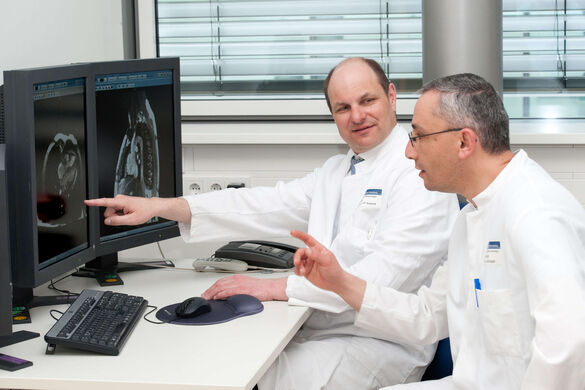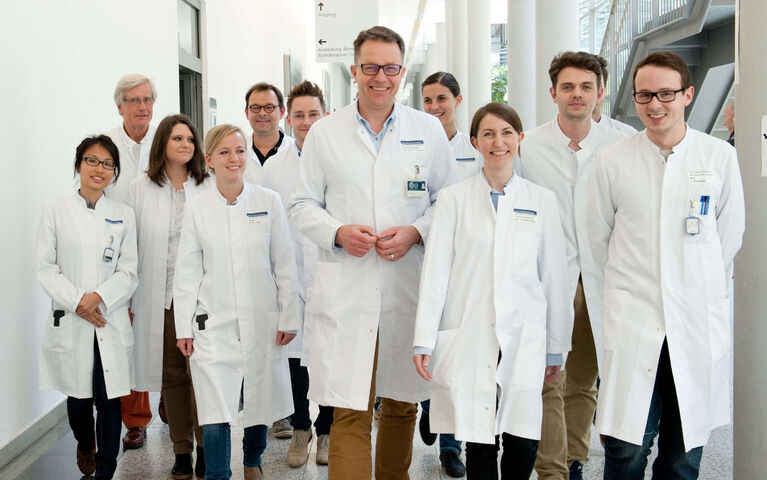Department of Diagnostic and Interventional Radiology
A BRIEF PROFILE
The DIR is an internationally leading center of excellence for diagnostic and interventional radiology. Beyond providing state-of the-art service to all patients of Heidelberg University Hospital and its regional, national and international partners, DIR is driving innovation in multiple fields:
- Image acquisition using dual-source and dual-layer spectral and low-dose CT, as well as high resolution structural and functional MRI
- High-end image reconstruction using iterative algorithms including computer-assisted segmentation and detection tools
- Structured reporting
- Utilization of quantitative imaging biomarkers as well as deep learning and artificial intelligence
Set of specification

core competencies and disease focuses
- Oncological radiology
- Abdominal imaging
- Chest and cardiovascular radiology
- Musculoskeletal radiology
- Interventional radiology
- Pediatric radiology

Key elements that are unique in national/international comparison
- Interventional radiology in oncology
- TACE
- RFA
- MWA
- IRE
- Chemosaturation

Innovative medical technology
- High end MRI
- Dual-source dual energy CT
- Dual-layer multi-energy CT
Working teams with international expertise
Working groups with international expertise

- Oncological radiology
- Abdominal imaging
- Chest and cardiovascular radiology
- Musculoskeletal radiology
- Interventional radiology
Research focuses
Publications with international reach
Schübel R, Nattenmüller J, Sookthai D, Nonnenmacher T, Graf ME, Riedl L, Schlett CL, von Stackelberg O, Johnson T, Nabers D, Kirsten R, Kratz M, Kauczor HU, Ulrich CM, Kaaks R, Kühn T. Effects of intermittent and continuous calorie restriction on body weight and metabolism over 50 wk: a randomized controlled trial. Am J Clin Nutr. 2018. |
Himbert C, Ose J, Nattenmüller J, Warby CA, Holowatyj AN, Böhm J, Lin T, Haffa M, Gigic B, Hardikar S, Scherer D, Zielske L, Schrotz-King P, Kölsch T, Siegel EM, Shibata D, Ulrich A, Schneider M, Hursting SD, Kauczor HU, Ulrich CM Body Fatness, Adipose Tissue Compartments, and Biomarkers of Inflammation and Angiogenesis in Colorectal Cancer: The ColoCare Study. Cancer Epidemiol Biomarkers Prev. 2019. |
Stahl M, Wielpütz MO, Graeber SY, Joachim C, Sommerburg O, Kauczor HU, Puderbach M, Eichinger M, Mall MA. Comparison of Lung Clearance Index and Magnetic Resonance Imaging for Assessment of Lung Disease in Children with Cystic Fibrosis. Am J Respir Crit Care Med. 2017 |
Skornitzke S, Kauczor HU, Stiller W. Measuring Dynamic CT Perfusion Based on Time-Resolved Quantitative DECT Iodine Maps: Comparison to Conventional Perfusion at 80 kVp for Pancreatic Carcinoma. Invest Radiol. 2019 |
| Rehnitz C, Kuni B, Wuennemann F, Chloridis D, Kirwadi A, Burkholder I, Kauczor HU, Weber MA. Delayed gadolinium-enhanced MRI of cartilage (dGEMRIC) and T2 mapping of talar osteochondral lesions: Indicators of clinical outcomes. J Magn Reson Imaging. 2017. |
| Go to PubMed |


